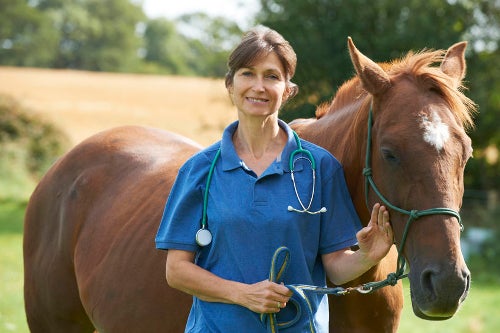Choke In Horses: Treatment And Prevention
Jun 5th 2020
 While choke in horses is relatively rare, it can be a frightening experience for both the horse and its owner. Quickly identifying the problem is important and there are steps you can take while awaiting veterinary assistance to alleviate the danger to the animal. Improperly handling the situation can exacerbate the problem and put the animal at higher risk for complications that are potentially fatal.
While choke in horses is relatively rare, it can be a frightening experience for both the horse and its owner. Quickly identifying the problem is important and there are steps you can take while awaiting veterinary assistance to alleviate the danger to the animal. Improperly handling the situation can exacerbate the problem and put the animal at higher risk for complications that are potentially fatal.
Signs Of Choking
Equine choking symptoms are similar to those in humans. The horse will suddenly quit eating and immediately look scared and confused. It will attempt to clear the obstruction by briskly shaking its head and extending its neck. These actions are typically accompanied by extreme drooling and bits of food exiting through its nostrils. The horse's anxiety may also cause pawing and heavy perspiration.
First Steps To Take
Stay calm. If you lose control or panic, the horse will sense your fear and reflect it. Immediately remove all types of food from the horse's reach, along with water, as further ingestion can escalate the problem. If the choke lasts longer than three to four minutes and doesn't appear to be subsiding, immediately contact your veterinarian.
Secondary Treatment
While you await the vet's arrival, concentrate on keeping the horse tranquil and still. Gently stroke the horse's withers and face, avoiding the neck, speaking in a steady, soothing voice. Lightly encourage the horse to lower its neck. If the choke happens in an open space like a pasture or paddock, slowly walk the animal into a barn or stall.
Wipe the horse's muzzle with a soft cloth to remove any discharge. Pay close attention to the discharge and, if possible, take photos of it with your cell phone to show the vet. The physical components of the discharge can be helpful in assessing the severity of the problem. If anything other than food is observed in the discharge, contact the in-transit vet immediately.
On the other hand, if the discharge stops, this is a good indication the horse has generated enough saliva to swallow the blockage and that the tension in its esophagus has passed. Let the vet know, as this is a sign that the immediate danger has subsided. Although the vet should still examine the animal's throat and mouth for tumors or other problems, the situation is not as urgent.
Actions To Avoid
Absolutely avoid spraying or squirting water or other liquids into the horse's mouth. Doing so significantly increases the danger of the animal contracting a dangerous lung infection called aspiration pneumonia caused by liquid in the lungs. Also avoid any home remedies. It's best to wait for the vet to decide the best course of treatment.
Subsequent Care
It's best to keep the horse confined to a barn or stall for a few days to monitor its progress. Immediately contact the vet if the horse develops a runny nose or fever or starts coughing. This monitoring period is crucial as any unknown materials or liquids that the horse may have ingested during the trauma could lead to aspiration pneumonia, which is complicated to treat and can be deadly.

